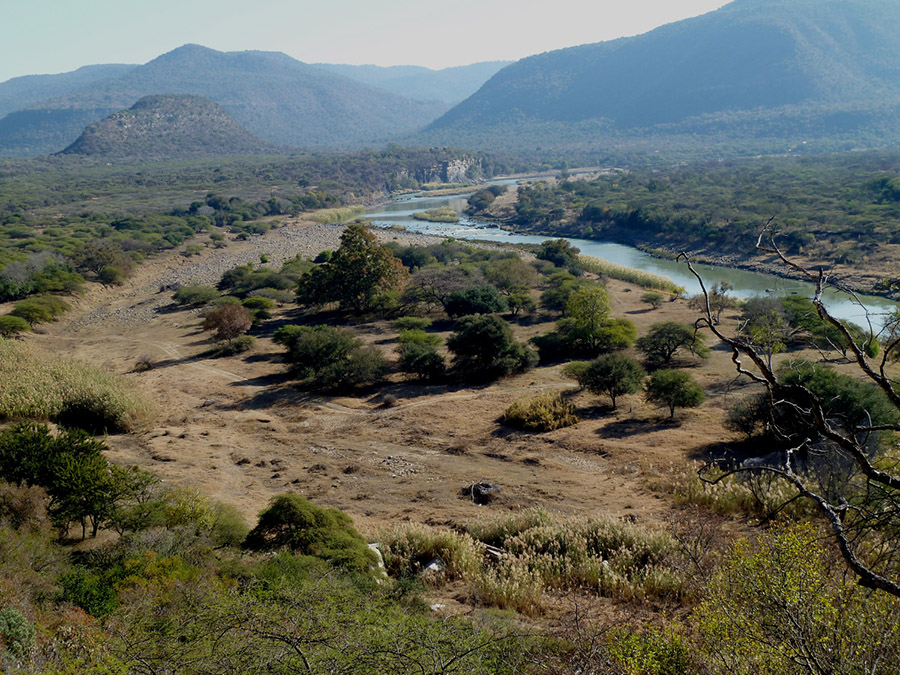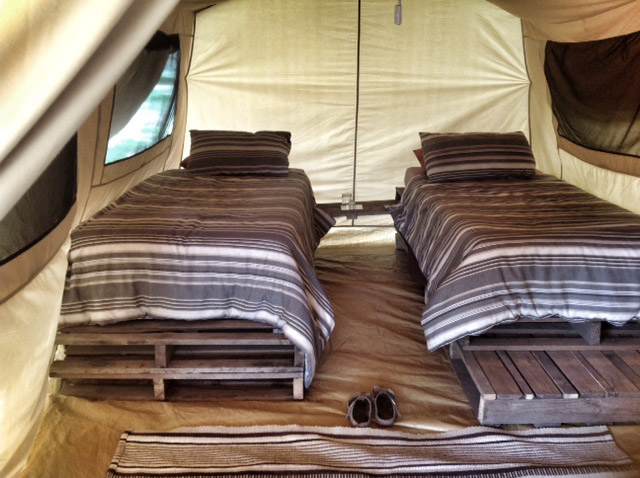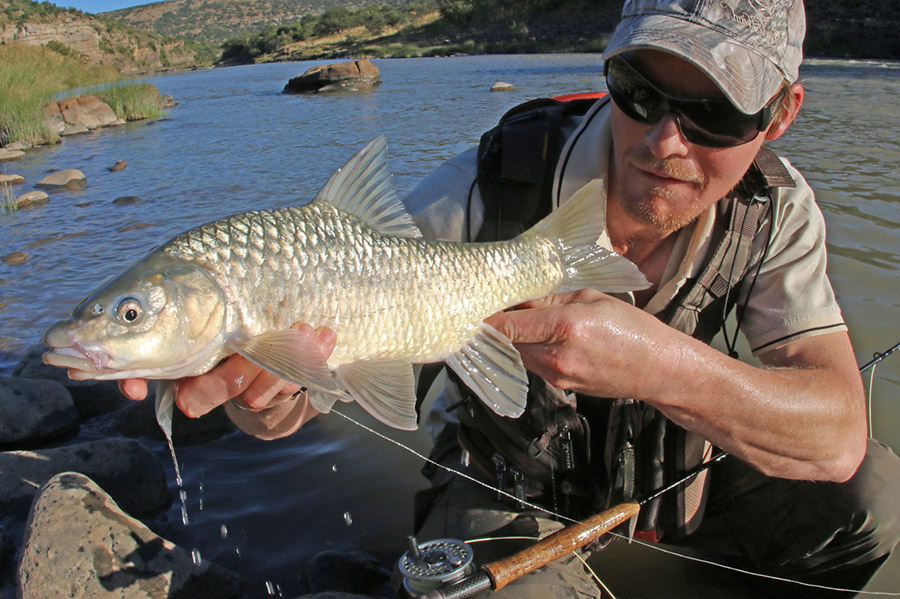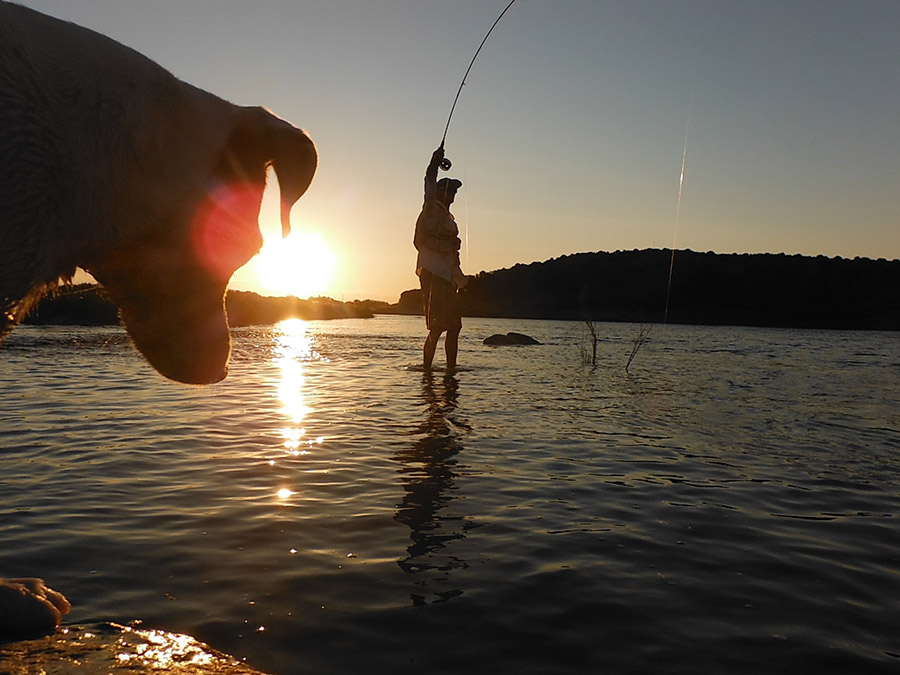- I grew up in the Natal midlands and from an early age I was fascinated by angling. My home river was the Tugela and the first fish I caught as a six-year-old was a Natal Yellowfish (Leobarbus natalensis) or, to give it its colloquial name, the scalie.
In comparison to the other yellowfish species, the scalie has received relatively little publicity and so, too – in comparison with rivers like the Vaal and the Orange – has the Tugela.
For the past 20 years my favourite scalie venue has been Zingela Ranch, alongside the Tugela River near Weenen in KwaZulu-Natal
It’s about as pristine, remote and rugged a yellowfish angling venue as you can get; which of course is its charm, added to which very few anglers have even heard of it. Casting a line at the bottom of a clear rapid, just strolling or within paddling distance of the super-comfortable tented and traditional thatched accommodation, you could be forgiven for thinking you’d time-travelled back a few millennia into a landscape untouched by humankind.
Click in images to enlarge

The Tugela River valley as seen from Zingela
The 4X4-only road in from Weenen is an adventure in itself and good ground clearance and a modicum of driving skill are required.

Accommodation ranges from comfortable to luxurious
My personal best in the few times I’ve managed to visit, is a 2,5kg cock-fish which took a bead head Woolly Bugger just off the bubble line and swirled on the periphery of my vision – 10 metres away from where I’d expected it to be.

Documentary film maker Rayno Egner with a middleweight scalie
The food, hospitality and bonhomie offered by Zingela’s 32year-long incumbents, Mark and Linda Calverley, has won them an incredibly loyal following of return clients who come to rock climb, game view, hunt, white water raft, or just sit back and blend-in with nature – and of course the odd angler who returns home shaking his head in mild wonder at the total solitude he or she has enjoyed on the water.
Some of those return clients got married at the venue as the relevant section on the Zingela website indicates, but a lot of them are anglers.
10 lb scalie
One angling visitor, says Mark, has made several visits over a period of years – from Ireland – to achieve his goal of a 10 lb scalie. He feels that he has achieved that goal three times and Mark measured one of these fish at 64 cms, which he feels must bring it very close to the magical double-figure mark.

Mark and Linda Calverley with a furry friend
For me, the attraction of fishing Zingela is its remoteness and the sure knowledge that I am often fishing stretches of the river that have probably not seen another angler in a year.
You have 15 kilometres of river above and below the camp, all of which is accessible by 4 X 4 or quad bike and another option is to float the river with a guide, all of whom know the river intimately.
The catch 22 situation when timing you are visiting Zingela is water clarity. On my most recent and very brief visit in April the river was running high, wide and not very handsome because of rain in the catchment area.
Says Mark: “We traditionally have a dry spring and this is by far our period of best fishing - once again though, spring is moving towards our summer rainfall with its profound effect on clarity.
“Autumn fishes very well and in my opinion is, on-average, the best time to visit the Tugela in the mid-section of the river we control. Rains have gone, the water is clearing and temperatures are still OK up to the first frosts – usually around late June.

Scalie fishing the 'wrong' way – but Mark Calverly says it works
“Most of our big fish, though, are caught in winter in mid-morning and again in the early afternoon. The best fish are caught in deeper stretches and in the slower glides and over the warm part of the day. The water is at its clearest then and long leaders and delicate presentations are required. The takes are often very subtle.”
I had arrived with a new rod, a ten foot-5wt Wychwood. I had asked Craig Thom at Stream-X in Cape Town for a rod which would be as much at home on the Tugela as it would on Lakenvlei dam near Ceres, my favourite home water. It proved a wise choice because it has seen a lot of R&D input from competitive anglers and combined both strength and delicacy.
Tungsten patterns
I had also arrived with some new flies, #16 and 18 caddis and mayfly nymph patterns consisting largely of tungsten and tied by Ed Herbst. Recent research indicates that yellowfish can find the staple in their diet, Baetis nymphs, no matter how turbid the water. Ed wanted me to use the tungsten patterns as a control fly with his translucent Simulid Nymph on the dropper.

A few of Ed Herbst’s control flies - #18 tungsten nymphs with a hot spot made from fluorescent Demmon thread
In my few hours on the water I fished hard and had four takes, one of them a strong fish, and I caught a few palm-sized scalies – all in water so muddy I would have instinctively gone for maximum size and shape to attract any fish – barbel included. All the tiddlers took the Simulid and my sense was that the bigger fish that I lost also targeted it.

Ed’s Simulid Nymph – its translucence and contrast make it the ideal dropper fly
This is gentlemanly fishing, late to rise, a hearty breakfast with many of the ingredients produced in-house and cooked by Linda and her culinary team and then a stroll of a few metres to the water’s edge. Neoprene wading socks and thermal underwear beneath breathable waders ensure that you wade in comfort even in the coldest water.
Says Linda: “We have a wonderful team and we get accolades for our meals. Sibongile and Qondile cater from one to one hundred with the same attention to detail. The menu always boasts a large selection of fresh vegetables and venison from the farm. Puddings are decadent and the winter soups, often served around the fire, are definitely not from a tin! We have had requests for recipes so often that we printed a cookbook which has proved very popular.”
It is wild country though and one is constantly reminded of the fact that life here for wilderness creatures is much the same as it has always been. Mark tells of watching spawning moggel (mudfish) in a howling gale in September.

A view of the river from one of the tents
“I crept up and lay on my belly, watching in fascination as a few fish beached themselves in the shallows - they were obviously exhausted.
“I resisted the temptation to return them to the water and was happy to see that even after an extended period out of the water they all eventually flapped themselves back and swam off.
“The wind was tearing the ripples into a spray and I was lying so close that my face became spattered with eggs. Such conditions attract barbel and I could see their whiskered snouts as they lurked on the periphery of the spawning activity.”
Salute the scalie
Ed Herbst has suggested that Mark runs an annual “Salute the Scalie” conclave, where fly fishers could be coached and guided by experts such as Horst Filter, Wally Schroeder a professional guide who specialises in fishing for scalies, and documentary film maker, Ryno Egner who knows the Tugela in this area very well. Mark and Linda welcomed the idea and I hope that the conclave becomes a reality and an annual fixture on the fly angler’s calendar.

A take at sunset on a bead head nymph - time to change to a CDC and Elk
The Zingela Safari and River Company also runs a tented camp on the Pongolo River where the preferred quarry is tigerfish – but that is another story for another day.



